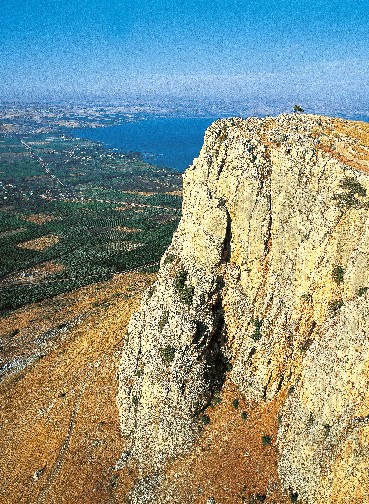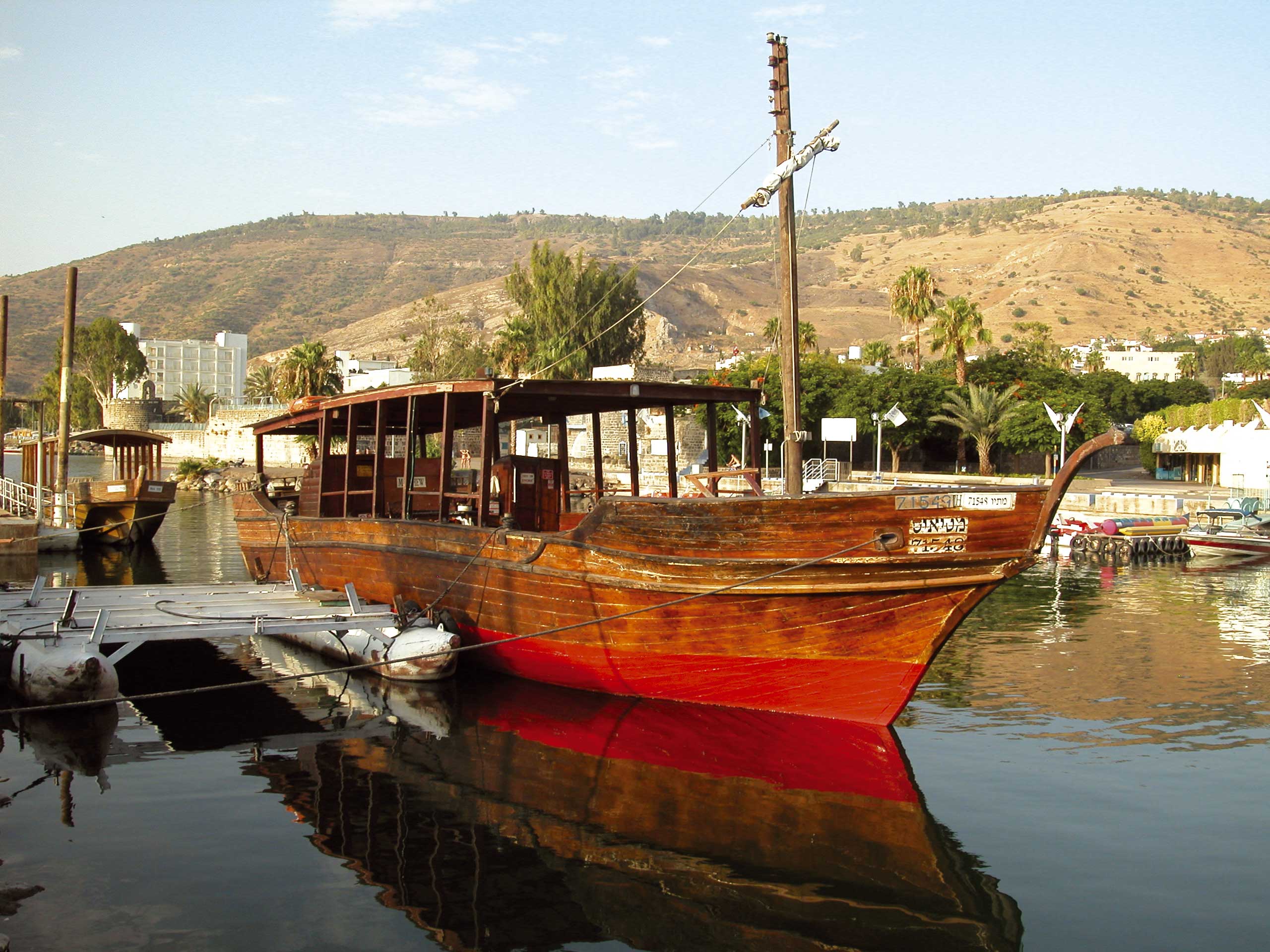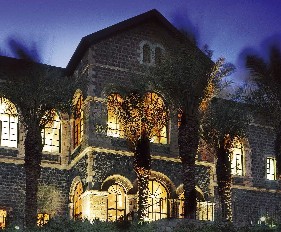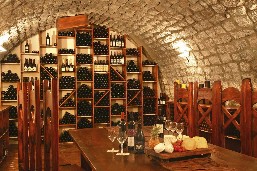|
ERETZ Magazine
|
Stayput Tiberias
Tiberias was founded by Herod of Galilee and
named after the Roman emperor Tiberias. It was founded as a pagan
town, but soon took on Jewish aspects, becoming a center of Jewish
learning and one of the four holy cities of the Land of Israel.
Tiberias was founded in the year 17 C.E. by
Herod of Galilee, the son of Herod the Great, on the shores of the
Sea of Galilee. It was named after the Roman Emperor Tiberias. For
the next 700 years, it was one of the most important Jewish centers
in the Land of Israel. It was the seat of the Sanhedrin and the home
of many Jewish academies. Rabbi Meir the Miracle Maker and Rabbi
Akiva lived, taught, and were buried in the city. Rabbi Yehuda Nasi,
the redactor of the Mishnah, used to frequent Tiberias’ famous hot
springs. The Jerusalem Talmud was written in Tiberias, and the
system of vowels still in use in Hebrew today was invented there.
Following the Arab conquest of the Land of Israel, Tiberias and its
Jewish community dwindled. In the eleventh century, it became the
capital of Crusader Galilee, only to be destroyed by Saladin in
1187. The grave of Saladin’s physician, the great Jewish scholar
Maimonides, is in Tiberias. His son is buried next to him.
In 1560, the Turkish sultan, Suleiman the Magnificent, entrusted the
ruins of Tiberias to his Jewish financier Don Joseph Nasi, who
rebuilt the walls and planned to turn the city into a world Jewish
center. His plans were thwarted by the local Arabs and Turks at the
sultan’s court. In 1740, the Bedouin governor of the Galilee, Dahar
el Omar, encouraged Jews to settle in the city and the Jewish
community began to expand. In 1777, a wave of Hasidic Jews from
Europe settled in Tiberias. The city was devastated by a massive
earthquake in 1837, but managed to recover. In 1912, the first
Jewish neighborhood outside the walls of the Old City was built.
Today Tiberias, with 45,000 inhabitants, is the largest city in the
Galilee.
(Back to top)
The Arbel Fortress
Mount Arbel is typical of the series of
escarpments that make up the Eastern Lower Galilee. On its
northeastern side it is a steep cliff that plunges down into the
escarpment underneath – in this case the Valley of Gennesareth, on
its other side it is a flat plateau of great farming land. The cliff
side of Mount Arbel overlooks the canyon of Nahal Arbel – the main
road that led from the coast down to the Sea of Galilee. Once at the
shore the route circumvented the sea – from the north and south –
and continued to Mesopotamia. This was the main highway of the
ancient world connecting the two sides of the Fertile Crescent.
Along this route marched the armies of the Pharaohs on their way
north and the armies of the Assyrians and Babylonians on their way
south. Roman legions passed through, as did the armies of the
Crusaders and Saladin.
Rabbis and sages walked through the canyon, mulling over the issue
of when are you allowed to start reciting the morning prayers (it is
the minute that you can tell the difference between blue and green
clover). Jesus and his disciples walked down this canyon, as did
pilgrims and supplicants, Jewish and Christian, making their way to
the graves of ancient sages or to the sites of the New Testament.
Overlooking the plateau above the cliff is the double horn-like
mountain known as the “Horns of Hattin,” the site of the final
showdown between the Crusaders and the Moslems.
In the face of the cliff is the Arbel Fortress – a three-storied
castle connecting caverns and caves in the cliff into one fortress.
The caves of Arbel were already famous in the times of Herod, when
Jewish rebels were flushed out of the cliff by Herod’s forces – who
had to be lowered down to the caves, or the fortress, in boxes.
In the Middle Ages, the fortress was the bastion of rebel leaders,
bandits, and local government officials. Today it stands empty on
the cliff, reachable by a path that negotiates the cliff face from
the lookout point at its top with ropes and metal pegs.
(photo: Doron Horowitz)
(Back to top)
Dining in Tiberias
The best place to dine in Tiberias is the
Torrance restaurant in the Scots Hotel, on the shore of the Sea of
Galilee. Chef Anat Otolangi has designed a gourmet menu based on
Galilean ingredients. Her creations are shown off daily in the
buffet-style meals (1 Gdud Barak Street, Tel. (04) 671-0730, not
kosher). Just across the street from the Scots Hotel is Decks, one
of the oldest restaurants in the area. It serves grilled meat and
fish in a building located right on the sea that is designed like a
ship, giving diners the feeling that they are right in the middle of
the Sea of Galilee (Lido Beach, Tel. (04) 675-1538, kosher). Guy is
another Tiberias institution; it has been operating in the city for
over 30 years. Don’t let its appearance fool you – it is famous for
Geula and Avraham’s delicious home-style cooking. The menu features
stuffed vegetables, rich meat and vegetable stews, and soups (Hagalil
Street, near the Panorama Hotel, Tel. (04) 672-3036, kosher).
(Back to top)
Archaeology
Archaeological Park Remains of Roman and
Byzantine Tiberias, including a synagogue, a mosaic floor,
sarcophagi, and basalt doors that used to belong to ancient burial
caves.
The Southern Walls Built in the eighteenth century by Dahar el Omar,
a large portion of the walls collapsed during the earthquake of
1837.
The Sea Mosque: Built in the eighteenth century and used by the fishermen of
Tiberias. In the 1950s, it was turned into the Tiberias Historical
Museum. The museum closed in the 1980s.
The Jewish Courtyard: The Etz Hahayim synagogue in the courtyard compound near the sea was
built in 1743. The Karlin and Senior synagogues, built in 1837, are
located adjacent to it.
St. Peter's This Franciscan church dedicated to Saint Peter was
built in the eleventh century.
Donna Gracia Street The street runs from the shore up the hill to
the citadel of Tiberias. Along the street are the Meyohas Youth
Hostel – built in 1896 as the most luxurious hotel in the Galilee,
the Scots Hotel – built in the nineteenth century to serve as a
hospital, the Saraya – dating from 1745, and the Donna Gracia
Museum.
(Back to top)
Graves of Sages
Maimonides (Rambam)
According to Jewish tradition, the great sage, who died in Egypt in
1206, was buried in Tiberias. Next to the grave of Maimonides are
the graves of the Talmudic sages Rabbi Yohanan Ben Zakkai, Rabbi
Elazar and others.
Rabbi Akiva
Buried in a cave above the city, next to the burial cave of Rabbi
Luzzato. The dramatic site overlooking the city draws many
supplicants, day and night. The tomb of Rabbi Akiva’s wife, Rachel,
is shown near the old cemetery of the city.
Rabbi Meir the Miracle Maker Buried near the southern entrance to
the city, the site which includes two synagogues and a Torah
academy, draws thousand of people all year round, and especially on
Jewish holidays and the feast day of Rabbi Meir.
(Back to top)
The Tiberias Hot Springs
For thousands of years the 17 hot springs of
Tiberias have been known for their therapeutic qualities. The
remains of the ancient hot springs are today inside the precinct of
the national park across the road from the modern hot springs. The
hot springs themselves, with a myriad of pools and treatment rooms,
are on the lake shore.
(Back to top)

Itinerary
Day 1: Tiberias
Tiberias has many sites to explore; here are a
few of the highlights. The archaeological park contains remains of
Byzantine Tiberias, including a synagogue, a mosaic floor, and
sarcophagi. In the Jewish courtyard are the Etz Hahayim synagogue,
and the Karlin and Senior synagogues. St. Peter’s is a Franciscan
church that was built in the eleventh century. Donna Gracia Street
runs from the shore up the hill to the citadel of Tiberias. Finally,
a tour of Tiberias is not complete without a visit to the hot
springs and the graves of some of the sages buried in the vicinity.
(Back to top)
Day 2: The Sea of Galilee
Leave Tiberias by the southern exit and drive
along the shore road for 11 km to the turnoff to Kvutzat Kinneret.
Drive up the road to Kinneret to the Yardenit Baptismal Site. Return
to the main road and continue to Kibbutz Deganiya Aleph for a visit
to the Deganiya Courtyard, the site of the first kibbutz. Return to
the main road and continue to the Zemah Junction. Drive to Kibbutz
Sha’ar Hagolan for a visit to the museum of prehistory. Return to
the Zemah Junction, and drive along Route 92 to Kibbutz Ein Gev.
Visit the ancient anchor’s museum and lunch at the kibbutz. Continue
north along the shore road to Kursi for a visit to the Site of the
Gerasene Demoniac (Kursi National Park). Take Route 789 up to the
Golan. At kilometer marker 9, turn right onto the dirt road with
blue trail markings. Drive along the road to the Mitzpe Ofir Lookout
Point for the view. Return to the road and continue south along
Route 769 to the Afik Junction. Turn right at the junction along
Route 98. Follow Route 98 along the Southern Golan Plateau, and the
hairpin curves that take you down the Golan to the Hamat Gader hot
springs. Take Route 90 back to Tiberias.
(Back to top)
Day 3: Kabbalah
Begin in Safed with an orientation seminar on
Jewish mysticism. Visit the medieval synagogues of Safed and tour
some of the Hassidic yeshivas in the old city. Tour the ancient
cemetery, where rabbis and mystics are buried. Take the road to
Biriya forest and follow the signs to the grave of Raban Yonatan ben
Uziel, a famous second-century mystic whose grave is a magnet for
shiduch seekers. Take the road back to the Bat Ya’ar ranch for
dinner.
(Back to top)
Day 4: The Galilee Panhandle
Take Route 90 north to Kiryat Shemona. Take
Route 99 to the turnoff to the Dan Nature Reserve. Walk along the
water route and then follow the path through the trees to the “high
place at Dan.” Drive back to Kiryat Shemona and take Route 90 to the
south. A kilometer and a half after the Koah Junction, turn left on
to the road leading to the Hula Agamon, an attempt to revive the
Hula swamp. Continue south to Rosh Pina for a walk through the old
village.
(Back to top)
Day 5: Jerusalem
Drive to Jerusalem via Routes 77, 65, 6, and 1.
Enter the Old City via the Jaffa Gate and visit the Tower of David
Museum. Then walk down David Street, the main souvenir market. Turn
left onto Christian Quarter Street and walk to the alley of Saint
Helena that leads down to the Holy Sepulcher. Exit by the small
entrance to the Muristan Market. Walk straight ahead until you reach
the market street of Khan e-Zeit. Turn right and walk down the
ancient Crusader markets. Once out of the market, make your way to
Sisileh Street. Walk down to the Kotel. Take the Rabbi Yehudah
Halevi steps up to the Jewish Quarter. Make your way to Zion Gate,
walk out the gate, turn right, and walk along the wall, back to the
Jaffa Gate.
(Back to top)
Day 6: Tel Aviv
Take Routes 77, 70, and 2 to Tel Aviv. Explore
Jaffa and then taste historic Tel Aviv by strolling through the
Neve Tzedek quarter, Rothschild Boulevard, and the surrounding
streets. Take a lunch break at Sheinkin Street and check out the
shops along Dizengoff Street. End with dinner on Ibn Gabirol Street.
(Back to top)
The Tiberias Hotel
In 1896, Richard Grossman, a German-Swiss
citizen who lived in Tiberias, built the Tiberias Hotel. It was one
of the most luxurious establish-ments in the Land of Israel. The
hotel had separate baths for men and women with hot and cold water
that came out of pipes directly into the baths. Guest who so desired
could have their baths filled with water from the mineral hot
springs. A special beach, the Lido, was developed opposite the hotel
for the guests. The guest list was impressive. Thomas Cook stayed at
the hotel, as did Theodor Herzl, the Turkish governors of Palestine,
and the chief rabbi of Turkey. In 1927, the sea planes of KLM began
landing in the Sea of Galilee on their way from Europe to Asia. The
hotel served as the depot for the passengers. When World War II
broke out, Grossman and his family left the country and the hotel
was declared enemy property and taken over by the British army.
After serving as an Arab outpost during the War of Independence, the
building was used as a military convalescence home and later turned
over to the Clalit HMO to serve as a rest home for workers. In 1971,
it was turned into a youth hostel and operates as such to date.
(Back to top)

The Scots Hotel
For almost
half a century, the Church of Scotland operated a pilgrims’ hospice
in Tiberias right on the edge of the Dead Sea. A few years ago, the
facility was renovated and reopened as the Scots Hotel, a boutique
hotel with 67 spacious, high-quality guestrooms. A great effort was
made to preserve the original facility, which Gottlieb Schumacher
designed in 1894 to serve as the first modern hospital in Tiberias.
For several decades, the hospital served residents of the entire
Galilee and much of what is today Jordan. The grounds were often
filled with the tents of families of Bedouin patients. Today the
main hospital building houses the main lobby,
Torrance restaurant, Scottish bar, and conference room. The
residences of the doctor and minister have been turned into 19
antique guestrooms with high ceilings and exposed basalt stone
walls. A modern building houses additional guestrooms. The Scots
Hotel also has a large outdoor swimming pool adjacent to the beach,
expansive lawns with ornate gardens and an ecological fishpond, a
wine cellar stocked with Galilean wines that can be used for hosting
small events, a shop, and a gallery. Bedouin patients. Today the
main hospital building houses the main lobby,
Torrance restaurant, Scottish bar, and conference room. The
residences of the doctor and minister have been turned into 19
antique guestrooms with high ceilings and exposed basalt stone
walls. A modern building houses additional guestrooms. The Scots
Hotel also has a large outdoor swimming pool adjacent to the beach,
expansive lawns with ornate gardens and an ecological fishpond, a
wine cellar stocked with Galilean wines that can be used for hosting
small events, a shop, and a gallery. (Back to top)
|
|